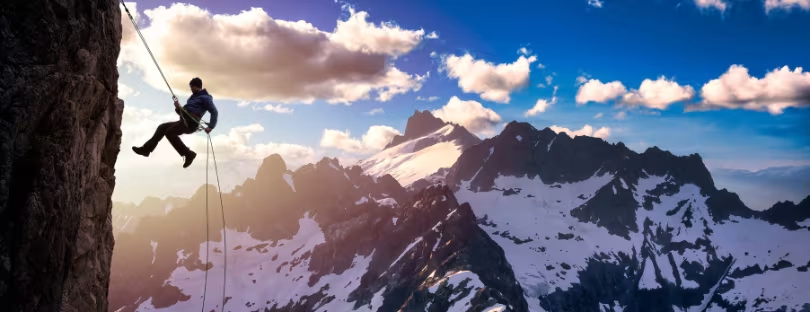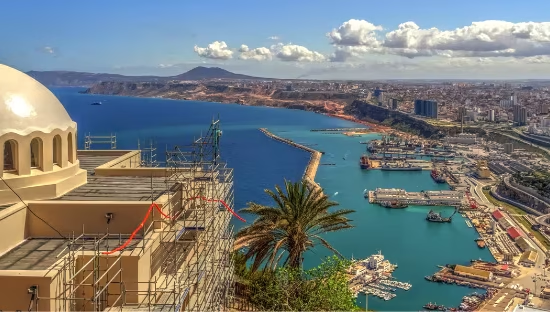
Extreme Tourism Market Soars to $99.7 Billion by 2034: Why Travelers Are Heading to the Edge of the World
Destinations once considered too remote or inhospitable — think Antarctica, Greenland, and the Arctic Circle — are now attracting a growing wave of thrill-seekers. Ice climbing, glacier trekking, polar diving, and wildlife expeditions are no longer fringe pursuits. They’ve entered the mainstream of high-end adventure travel.
What’s driving it? A mix of curiosity, urgency, and capability. Travelers want to witness raw, untouched landscapes before climate change alters them forever. At the same time, advancements in expedition cruises and guided tours are making these extreme environments safer and more accessible. In short: it’s easier than ever to chase the edge of the world — and people are paying handsomely to do it.
A Market on Fire: $30.5 Billion to Nearly $100 Billion in a Decade
According to Allied Market Research, the global extreme tourism market is set to triple from $30.5 billion in 2024 to $99.7 billion by 2034, growing at a 12.6% CAGR. That’s faster than most travel sectors.
Extreme tourism encompasses activities such as mountain climbing, cave exploration, skydiving, and deep-sea diving — but its definition continues to expand. New sub-niches like volcano trekking, Arctic surfing, and zero-gravity experiences are emerging, especially as adventure operators diversify and target niche audiences.
This growth mirrors broader consumer shifts: travelers are spending less on possessions and more on experiences. Higher disposable incomes and a craving for authenticity are pushing people to try once-unthinkable adventures. Even families and couples — not just solo thrill-seekers — are getting in on the action.
Social Media: The Silent Fuel Behind the Rise
The influence of digital storytelling cannot be overstated. Instagram and TikTok have turned remote expeditions into viral sensations. A single photo of someone dangling from an ice wall in Svalbard or diving under frozen waters in Greenland can spark a thousand bucket lists.
This “social proof” effect is powerful — and it’s reshaping how operators market extreme travel. Companies like Intrepid Travel, G Adventures, and Quark Expeditions are investing heavily in content creation and influencer collaborations. Authentic video diaries, GoPro footage, and “raw moments” are now central to selling adventure packages.
Emerging Markets: The Next Frontier
While North America and Europe currently dominate, the next wave of growth is coming from Asia-Pacific, Latin America, and Africa. Rising incomes and improved connectivity are making it easier for travelers in these regions to access extreme adventures — both at home and abroad.
Countries like Chile, Nepal, Kenya, and Indonesia are actively promoting adventure-based tourism to diversify their economies. Governments see it as a tool for rural development, job creation, and sustainable growth. With improved transport links and digital booking tools, remote destinations that were once hard to reach are now just a few clicks away.
Who’s Traveling — and Why
The 25–45 age group dominates the market, driven by a blend of wanderlust, social media influence, and economic stability. These travelers aren’t necessarily daredevils — they’re looking for meaningful, once-in-a-lifetime experiences that test their limits while providing a sense of achievement.
Group travel is another strong trend. The friends/group segment accounted for more than a third of the global market in 2024. Activities like white-water rafting, desert rallies, or jungle treks are inherently social, combining adventure with bonding and storytelling.
Travel Agents Are Back in the Game
Interestingly, travel agents are reclaiming their importance in this high-risk niche. Extreme tourism involves complex logistics, permits, insurance, and local expertise — all of which can be challenging to navigate alone.
Agents and specialized tour operators simplify the process, connecting clients with certified guides and trusted local providers. Their personalized packages also cater to varying fitness levels and comfort zones — making extreme tourism more inclusive than ever.
Europe: Still the Epicenter of Extreme Travel
Europe remains the largest regional market, thanks to its rich natural diversity and infrastructure. From the Alps’ climbing routes to Iceland’s ice caves and Norway’s heli-skiing terrain, the continent has perfected the art of controlled adventure. Southern Europe adds another flavor — volcano trekking in Sicily, cliff diving in Spain, and paragliding in Turkey — blending danger with culture and cuisine.
Efficient transport networks and short distances between extreme sites make Europe ideal for travelers looking to pack multiple adventures into a single trip.
Sustainability and Safety: The Balancing Act
The elephant in the room is sustainability. As fragile ecosystems become adventure hotspots, the risk of environmental degradation rises. The International Ecotourism Society and Adventure Travel Trade Association have both called for stricter standards to ensure that extreme tourism doesn’t destroy the very environments it celebrates.
Similarly, safety and liability remain key restraints. While operators are improving training and equipment, the physical risks — from altitude sickness to accidents in remote zones — can’t be eliminated entirely.
Some companies, like Wilderness Travel and Abercrombie & Kent, are leading the charge by adopting carbon offset programs and partnering with conservation projects in the destinations they operate.
The Big Picture: Experience Is the New Luxury
Extreme tourism perfectly encapsulates the modern traveler’s mindset: adventure over opulence, transformation over relaxation. Where luxury once meant five-star hotels, it now means five-star experiences — climbing Mount Kilimanjaro, diving with sharks, or standing at the edge of a melting glacier.
Compared to other sectors like eco-tourism or wellness retreats, extreme tourism faces steeper safety and environmental challenges. But its momentum — and profitability — are undeniable. As younger generations redefine what travel means, the line between extreme and mainstream will continue to blur.
If adventure travel was once about courage, today it’s about conscious exploration — pushing limits without crossing ethical or environmental boundaries.
And that’s where the future of travel lies.












